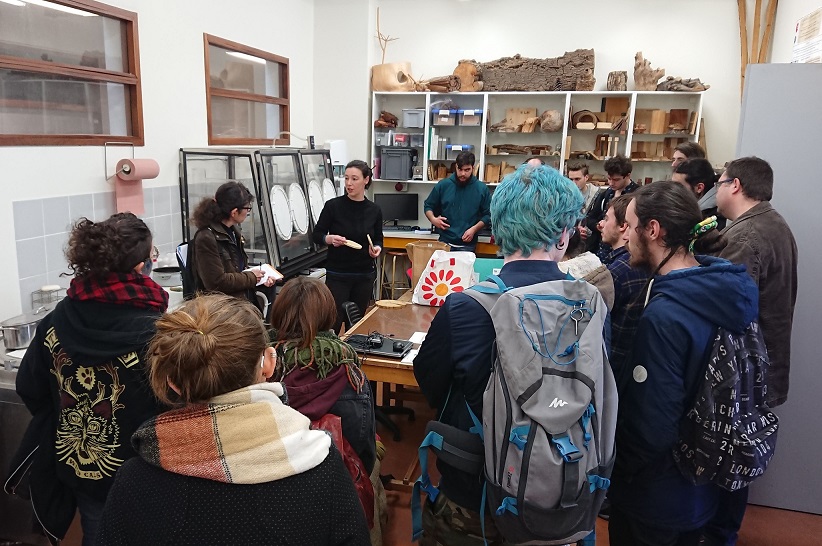Brémaud Iris and Gril Joseph
Transient destabilisation in anisotropic vibrational properties of wood when changing humidity .
Holzforschung Ahead of Print. (2020)
DOI: https://doi.org/10.1515/hf-2020-0029
Abstract: Moisture changes cause transient effects in various polymeric materials. In wood, they are mainly documented in semi-static or low-frequency domains and could explain various anomalies in wood behaviour, including the so-called mechano-sorptive effect. This article aimed at exploring and quantifying transient effects in wood vibrational properties, evidenced but in few publications. A series of 65 experiments on spruce and maple, in longitudinal (L) and radial (R) directions, spanning many humidity trajectories, were monitored through time (1–7 weeks) after step-change in relative humidity (RH). Changes in dimensions and specific dynamic modulus of elasticity (E′/γ) closely followed change in moisture content (MC). But the damping coefficient (tanδ) always increased (whether MC increased or decreased) within first hours/days, before slowly re-decreasing. This was quantitatively analysed by subtracting equilibrium moisture content (EMC) dependence from the global changes in tanδ, which simultaneously expressed destabilisation, followed by physical ageing (a slow process towards approaching equilibrium). For small EMC steps, the amplitude of destabilisation in L tanδ exceeded changes due to EMC dependence. Destabilisation was of similar importance relative to L or to R tanδ, while R tanδ showed much (2−4×) stronger EMC dependence. Amplitude of destabilisation increased with wider RH/EMC-steps (and faster sorption rates). Within an experiment, maximum destabilisation occurred nearly concomitantly with maximum sorption rate. Equilibrium was usually reached in MC, even within one week, but seldom in tanδ, even after several weeks. Results suggested that: (i) drying caused similar amplitudes of destabilisation, but that occurred sooner, and recovered faster, than humidifying; (ii) small RH-steps caused relatively smaller amplitudes of destabilisation, but that occurred later, and spanned over longer time before recovering equilibrium, than wide RH-steps. Some possible hypotheses are introduced to explain the observed phenomena. These phenomena also have important practical consequences in real-life wood uses and, particularly, in the design of experimental protocols
Keywords: Anisotropy; damping by internal friction; destabilisation by moisture sorption; dynamic mechanical properties; physical ageing; transient effects; viscoelastic vibrational properties .
